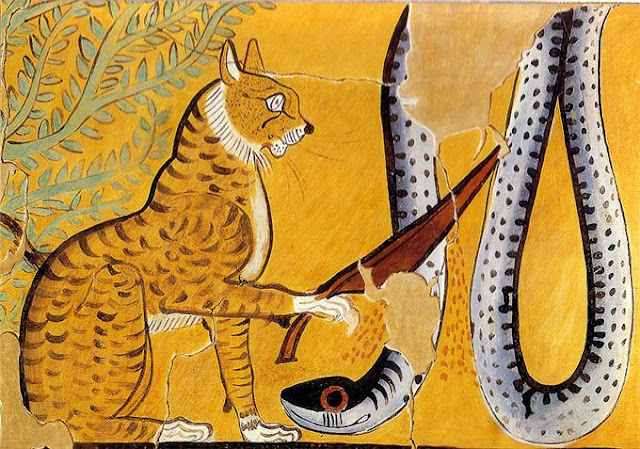Justice in Egypt
 |
| Ra as the Sun Cat, destroys the serpent |
Cosmic Duality: Maat and Isfet
What really constitutes good and evil? Is evil personified by an external entity, like the devil in other traditions? Does good arise from celestial agents that guide towards an idealized destiny?
For the Egyptian worldview, the Good was embodied in Maat: the cosmic principle that merged Justice, Order and Harmony. Far from the rigidity associated with the term “order” in modernity — often linked to oppressive power structures — Maat represented the organic equilibrium where each individual reached their full potential in harmony with the collective. It was conscious freedom: my personal fulfillment intertwined with respect for the vital space of others, thus weaving a network of luminous interdependence.
This transcendent Order evokes the molecular structure of a diamond: carbon atoms arranged with geometric precision to refract light into shared sparkles. The Order of Maat is not about imposed uniformity, but spontaneous coordination where those with greater wisdom or power sublimate their ego to serve the whole. Maat was, in essence, the ethical architecture of the universe: a system where individual excellence fed collective glory.
It is true that Egypt was not free of injustice — what society is? — but its greatness lies in having erected these ideals as an existential compass. Today, under the mirage of democracies that have usurped popular sovereignty in favor of corporations and elites, this ancestral wisdom resonates with urgency.
Evil, personified as Isfet, was not an external demon, but entropy or the inevitable tendency born of the rupture of equilibrium. It was not temptation personified, but the darkness emanating from social chaos and from inner disorder. When injustice —individual or collective— clouds our perception, we stumble into errors that damage the fabric of existence.
Maat was symbolized by an ostrich feather: the lightness of the ethereal against the density of matter. Its iridescent wings embraced gods, humans and beasts alike, reminding us that Justice transcends species and status. Isfet, on the other hand, took serpentine forms: Apep, the serpent of the underworld that threatened the solar boat of Ra, or the creeping creatures that crawl in spirals of self-destruction:
 |
| Apep, the serpent of evil that the candidate has to kill within himself |
However, the serpent also had its sacred counterpart: the Uraeus serpent rised on the pharaohs' foreheads, emblem of spiritual vigilance. This duality reflects the essence of the human: the creeping shadow and the rising consciousness.
Meanwhile,





No comments:
Post a Comment